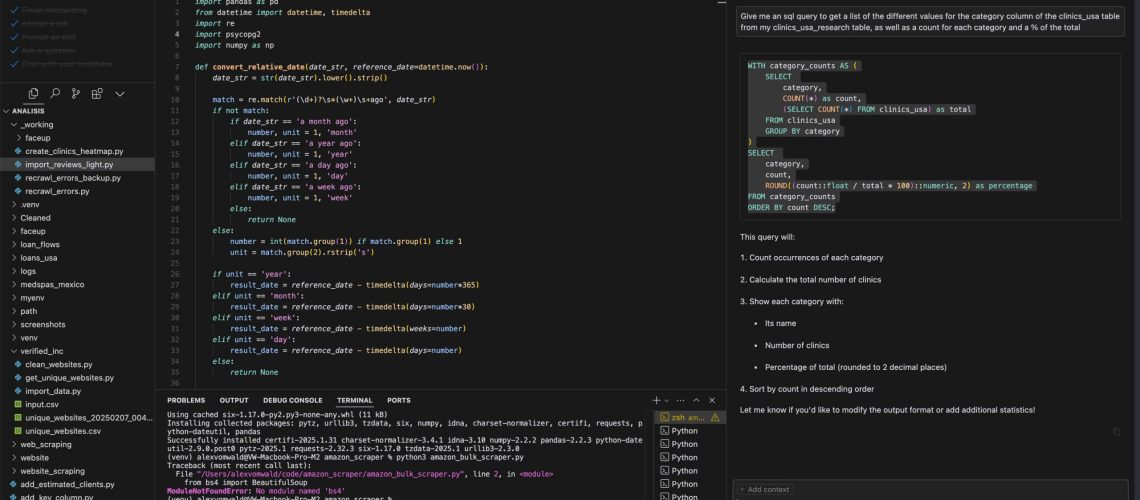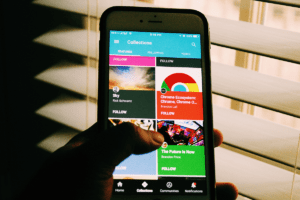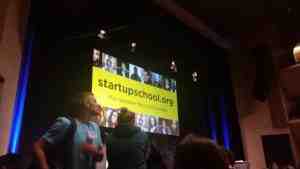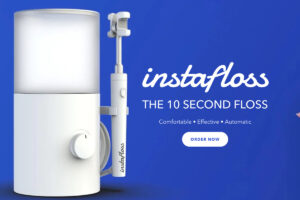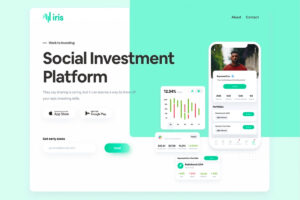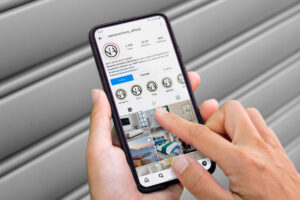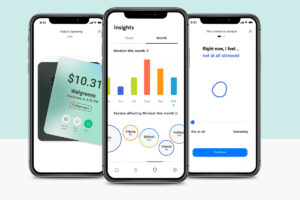How AI Helped Me Map Out the Clinic Industry & Their Software Stack
Market research has always been about collecting the right data and extracting valuable insights. But in the past, it required expensive reports, complex SQL queries, and manual research.
That’s no longer the case. With AI-powered tools like Cursor, I was able to:
✅ Scrape thousands of clinics from Google Maps.
✅ Identify which booking software they use.
✅ Estimate the size of the market using customer review data.
✅ Visualize business hotspots with AI-generated heatmaps.
This entire research project took a fraction of the time it would have in the past. No need for a data science team—just AI and a bit of patience.
🚀 The full Python scripts, SQL tables, and sample datasets for this project are available on my GitHub repository, so you can try this yourself.
Let me walk you through exactly how I did it and how you can replicate this process.
Applying This Process to Other Industries & Use Cases
While this deep dive focused on clinics and booking software, this same process can be applied to many other industries. With the right keywords and sources, you can:
- Scrape product listings for e-commerce research to track pricing trends, reviews, and competitive positioning.
- Analyze restaurant locations and reservation systems to understand market penetration and customer sentiment.
- Track software adoption in different B2B industries to identify opportunities for SaaS providers.
This approach isn’t reinventing the wheel—it’s just making it easier and faster to gather actionable insights using AI-powered tools. The biggest advantage? Even non-technical users can now perform deep industry research without needing complex programming skills.
Step 1: Scraping Thousands of Clinics & Their Booking Software
Building the Keyword + Location List
To start, I needed a comprehensive list of clinics across the U.S. This required:
🔹 Keyword-based queries → “Botox clinics,” “Medical spas,” “Dermatology clinics,” etc.
🔹 Geographical targeting → Major U.S. cities, states, and zip codes.
To make this easier, I used an Excel file containing a list of U.S. cities and states, which is included in my GitHub repository. This file allows you to easily generate location-based search queries for web scraping.
Automating the Data Collection
Using Octoparse (referral link), I scraped Google Maps listings to collect:
- Clinic names
- Addresses & phone numbers
- Websites
- Review counts & ratings
The goal? To identify which clinics used online booking software and analyze their customer review data to estimate business size.
🚀 The full Python scripts to clean and format this data are in my GitHub repository.
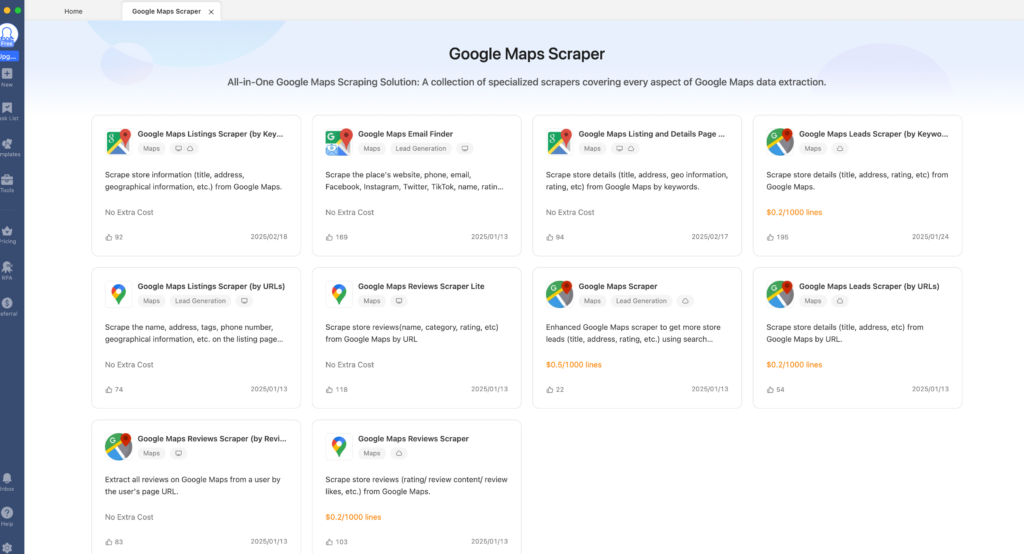
Step 2: Analyzing Which Booking Software Clinics Use
How I Detected Booking Software
After collecting clinic websites, I automated the process of detecting which booking software they use by:
1️⃣ Visiting each clinic’s website.
2️⃣ Identifying booking-related buttons (“Book Now,” “Schedule Appointment”).
3️⃣ Extracting the URLs behind those buttons.
This was key because most appointment systems have unique subdomains, allowing me to infer the booking software.
For example:
- If a clinic’s booking page was hosted on
square.site, they were using Square Appointments. - If the URL contained
mindbodyonline.com, they were using Mindbody. - If it linked to
zocdoc.com, they were using Zocdoc.
Matching Clinics to Their Booking Software
Using Cursor’s AI-powered SQL automation, I quickly matched clinics with their booking software.
💡 Top booking software detected:
🔹 Mindbody – Common for wellness & medical spas.
🔹 Square Appointments – Used by independent practitioners.
🔹 Zocdoc – Popular among larger clinics.
🔹 JaneApp – Found in holistic health & alternative medicine.
🚀 The SQL tables containing these software matches are in my GitHub repository.
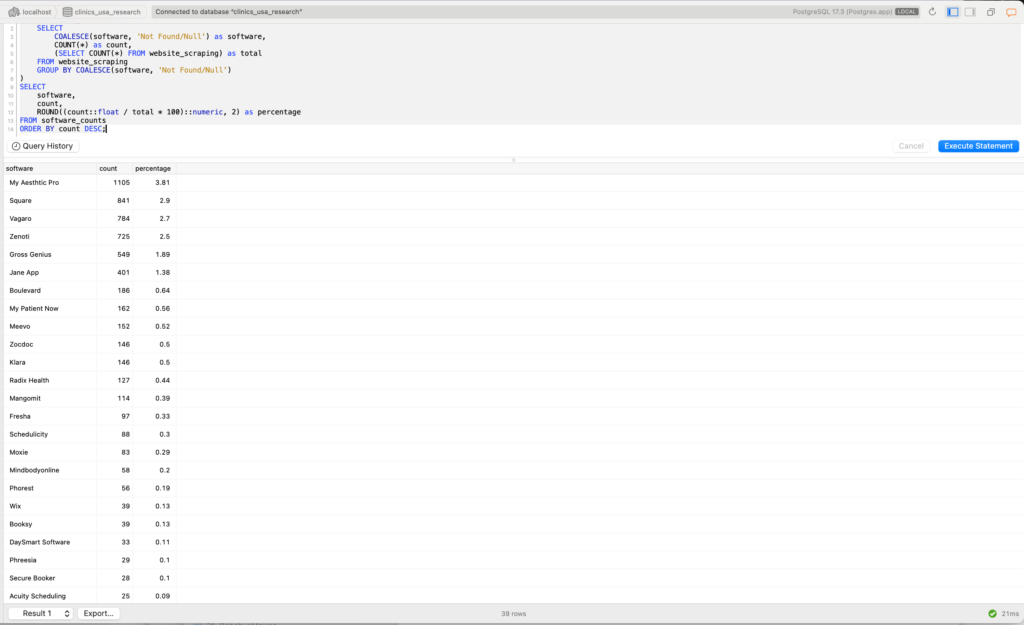
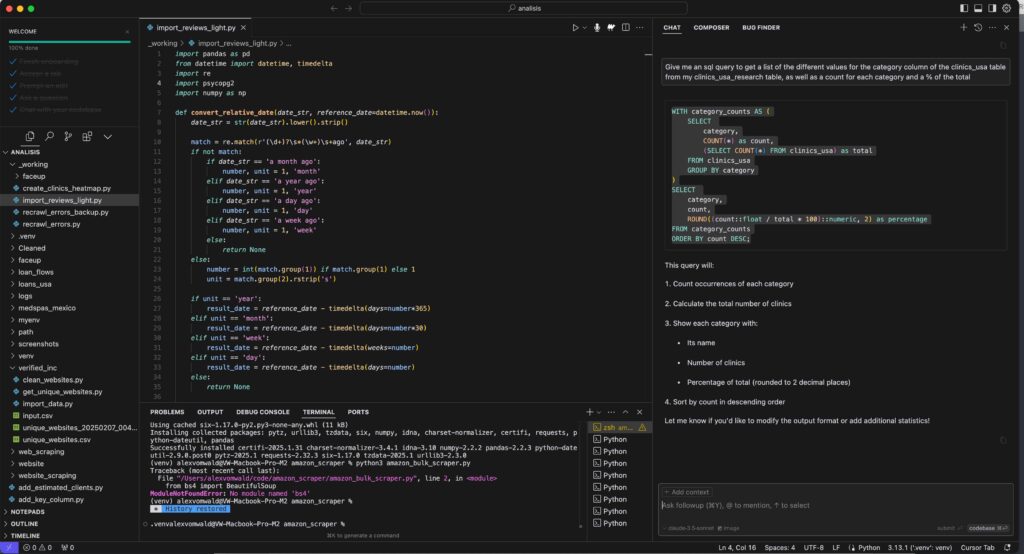
Step 3: Estimating Market Size Using Customer Review Data
One of the biggest challenges in market research is estimating revenue without direct access to financials.
But customer review data provides a powerful indirect estimate.
How I Used Reviews to Estimate Business Volume
📌 1-10% of customers leave reviews.
📌 Each review represents multiple actual customers.
📌 If we estimate the average transaction size, we can infer revenue.
For example, if a clinic had 500 reviews and I assumed only 5% of customers left reviews, this suggests they had:
✅ 10,000 customers total (500 reviews × 20).
✅ If the average treatment cost was $200, their estimated revenue was $2M.
Using Cursor’s AI-powered SQL, I:
🔹 Grouped clinics by total review count.
🔹 Estimated total customer volume based on review ratios.
🔹 Assigned potential revenue estimates based on average treatment costs.
🚀 The SQL queries and revenue estimation scripts are available on my GitHub repository.
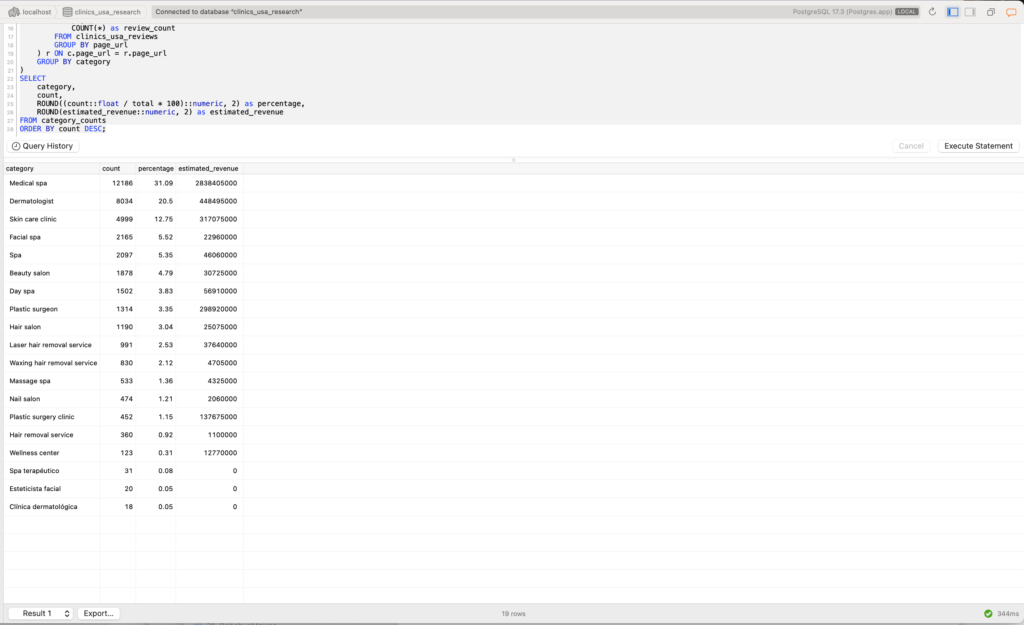
Step 5: Keep playing with it and have some fun Vibe Coding
After gathering thousands of clinics and their data, I wanted to visually map industry hotspots.
So, I asked Cursor:
💡 “Can you generate a heatmap of clinics based on review scores?”
And it did—almost instantly.
Was it perfect? No, it needed tweaking.
It would need more tweaking but it was interesting to see the quick jump from the data queries to a more visual request.
Vibe Coding: Learning to Work with AI
This process taught me the power of “vibe coding”—where you:
✔️ Experiment, ask AI questions, and refine results.
✔️ Let AI handle the hard work while you guide the analysis.
✔️ Iterate quickly instead of getting stuck on complex coding.
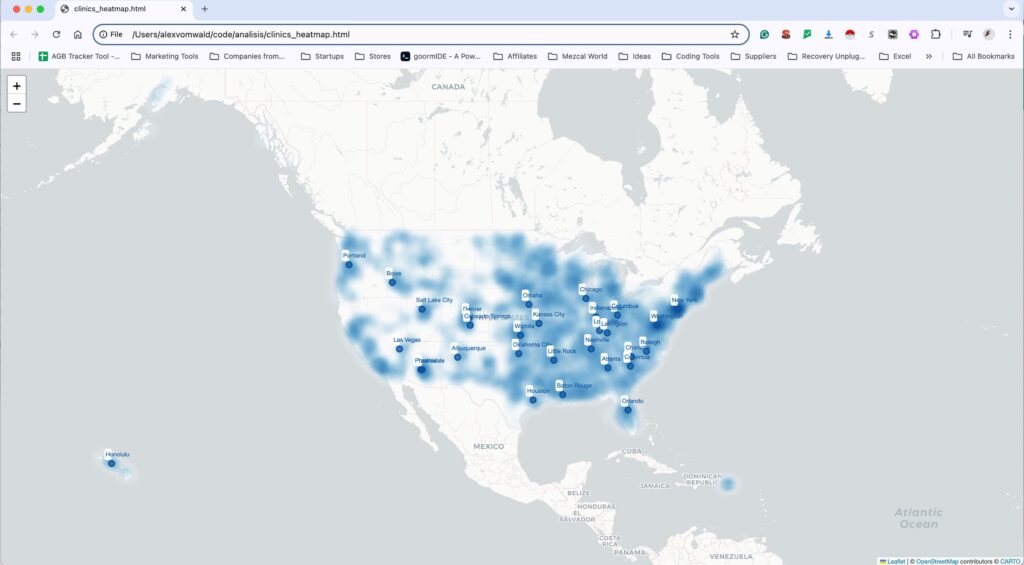
Want to Try This Yourself? Here’s How to Start
🔗 1. Download the full dataset & Python scripts from my GitHub → GitHub Repository
🔗 2. Use Octoparse to scrape your own data → Start with my referral link.
🔗 3. Analyze & visualize with Cursor → AI-powered SQL & Python make data analysis easy.
🚀 If you’re not leveraging tools as Cursor, you’re already behind.
Final Thoughts: AI Tools continue to change many tasks forever
What used to take weeks of manual research can now be automated in hours. But at the end of the day, data is only as valuable as what you do with it.
This research was just a sample project to get more familiar with Cursor’s AI-powered SQL capabilities while also refreshing my SQL skills. The ability to scrape, clean, and analyze large datasets in minutes opens up a world of possibilities—especially when combined with automation and AI-driven decision-making.
Beyond analyzing clinics and their software, I’ve also been running tests scraping treatment details, pricing, and duration from booking systems. Using this data, I’ve been able to:
- Automate chatbot and voice bot creation for clinics and wellness businesses.
- Generate AI-powered customer interaction demos that could be pitched at scale.
- Automatically personalize chatbot flows based on the services and pricing of each business.
This means that, in the future, you could potentially automate the creation of AI-driven chat and voice bots for clinics at scale—without manual setup.
The businesses that embrace AI-driven automation and market research will dominate their industries—those that don’t will struggle to keep up.
So, how will you use data to create your next competitive advantage?

